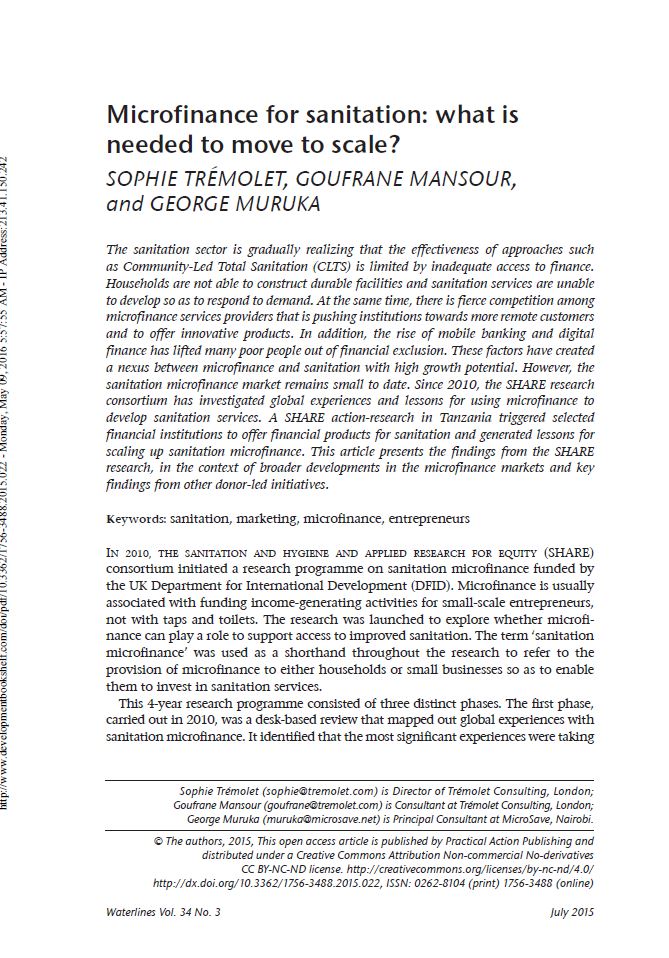Microfinance for sanitation: what is needed to move to scale?
 |
La microfinance pour l'assainissement : de quoi a-t-on besoin pour la développer ?
article Jul 2015 ; 14 pages
Aut. Goufrane Mansour & Sophie Trémolet & George Muruka
Ed. Practical Action - Rugby
Téléchargeable sous format: PdF
Téléchargeable chez l'éditeur
Page de présentation d'un éditeur
Abstract:
The sanitation sector is gradually realizing that the effectiveness of approaches such as Community-Led Total Sanitation (CLTS) is limited by inadequate access to finance. Households are not able to construct durable facilities and sanitation services are unable to develop so as to respond to demand. At the same time, there is fierce competition among microfinance services providers that is pushing institutions towards more remote customers and to offer innovative products. In addition, the rise of mobile banking and digital finance has lifted many poor people out of financial exclusion. These factors have created a nexus between microfinance and sanitation with high growth potential. However, the sanitation microfinance market remains small to date. Since 2010, the SHARE research consortium has investigated global experiences and lessons for using microfinance to develop sanitation services. A SHARE action-research in Tanzania triggered selected financial institutions to offer financial products for sanitation and generated lessons for scaling up sanitation microfinance. This article presents the findings from the SHARE research, in the context of broader developments in the microfinance markets and key findings from other donor-led initiatives.
Publics-Cibles:
Mots clefs: |
assainissement (CI) (DT) (OP) (ope) , coûts, prix, tarifs (CI) (DT) (OP) (ope) , microfinance (CI) (DT) (OP) (ope) |
Editeur/Diffuseur: |
|
Practical Action - Rugby - Royaume Uni |
En cas de lien brisé, nous le mentionner à communication@pseau.org